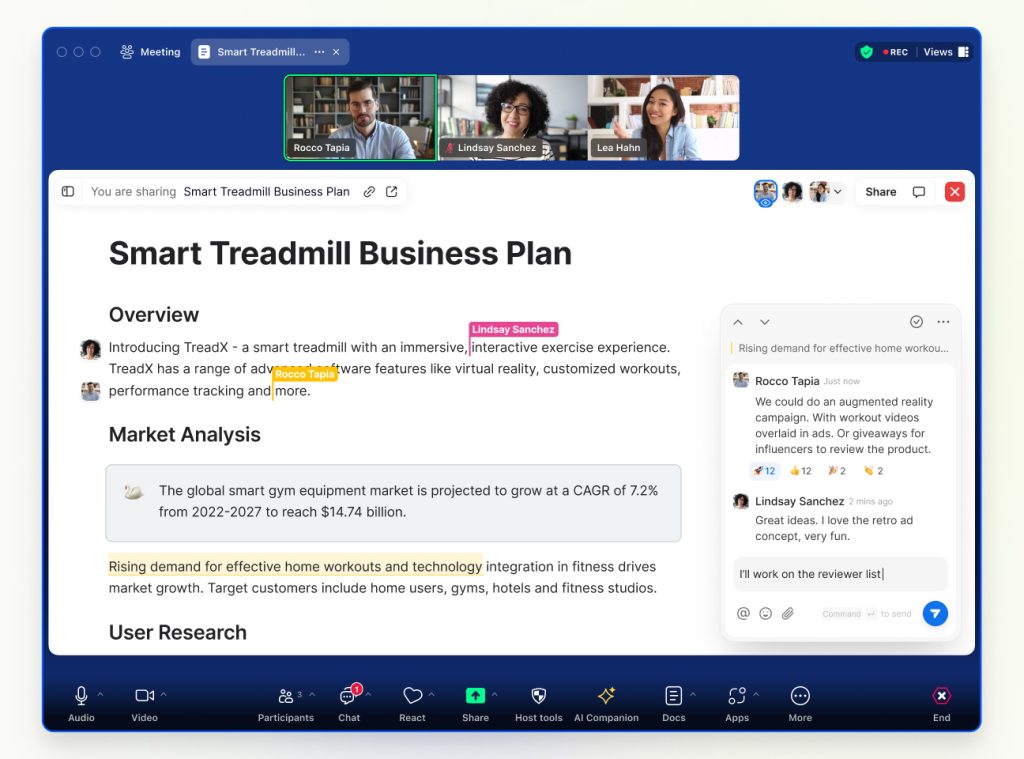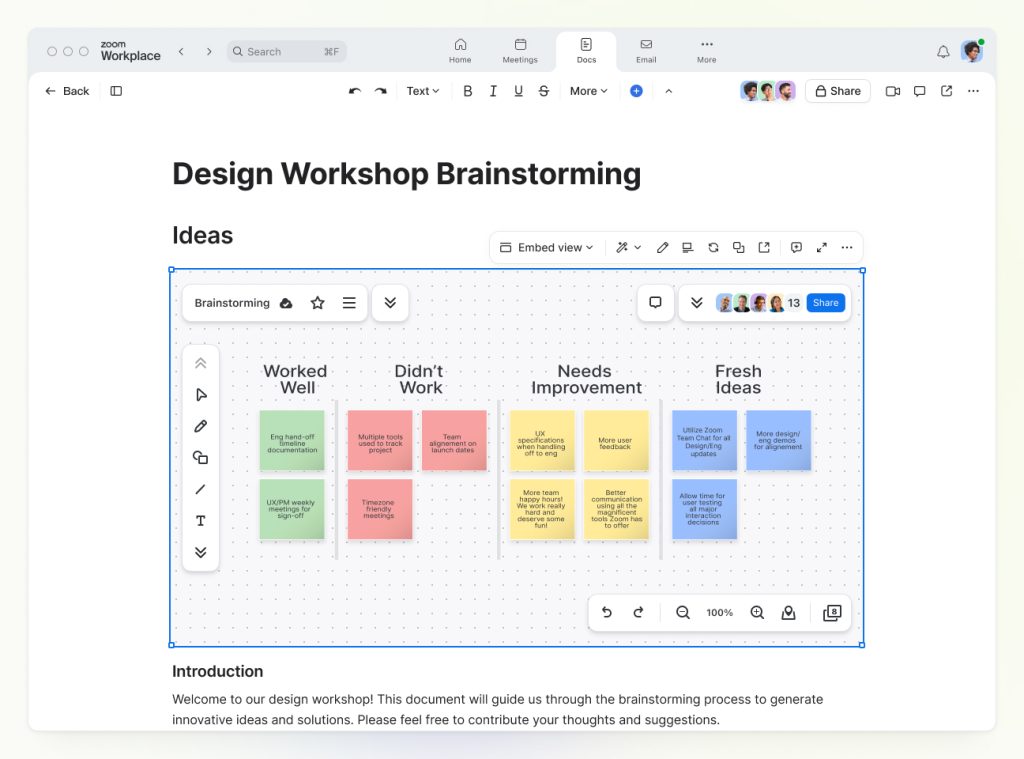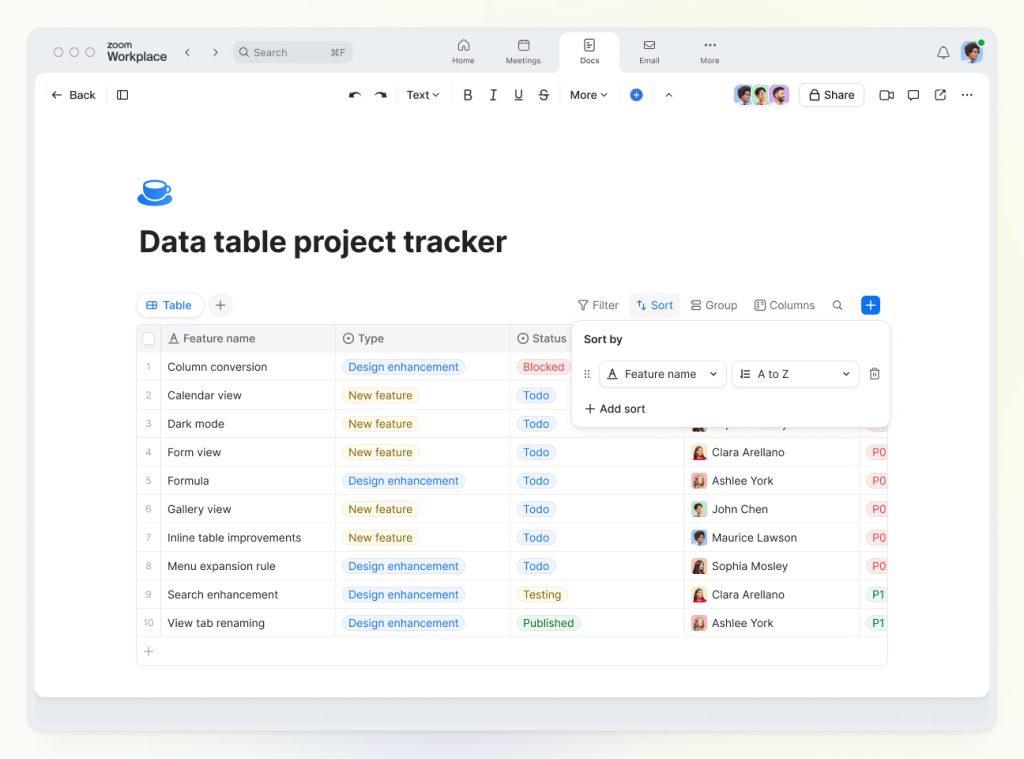The Document Tool Forms Another Way the Platform is Challenging Google and Microsoft
Starting Monday, Zoom will introduce a new feature allowing users to open a document tool directly within the video calling app to create and share files from their meetings. This update will also prompt users to leverage generative AI for writing and editing tasks. The document tool, Zoom’s answer to platforms like Google Docs and Microsoft Word, aims to enhance Zoom’s role in the workplace and offer businesses an all-in-one solution.

The document tool incorporates Zoom’s AI Companion, a generative tool powered by large language models from OpenAI, Anthropic, Meta, and Zoom’s proprietary models, first introduced last fall. This AI can transform meeting transcripts into organized templates and create tables, checklists, and trackers to streamline processes. Documents can be seamlessly integrated into Zoom meetings for real-time sharing and editing.

“AI is what makes the experience so differentiated,” explains Smita Hashim, Zoom’s chief product officer. “The goal is that the mundane, high-friction tasks, which take up so much of our time, can be done by AI.”
This new feature represents the latest update to Zoom’s Workplace suite, which debuted in March. Zoom’s initiative aims to carve out a niche in a market dominated by Google Workspace and Microsoft 365, both of which have incorporated AI into their services.

Will McKeon-White, senior analyst of infrastructure and operations at Forrester, notes that the market is “extremely difficult to compete in” but not insurmountable, highlighting Google Docs’ success despite Microsoft’s longstanding dominance with Word. Google Workspace boasts over 3 billion users, and Microsoft Teams reports more than 320 million monthly active users.
Zoom’s competitive edge may lie in pricing. Its Workplace plans, which include the AI Companion at no extra cost, range from $14 to $19 per user per month for smaller companies. In contrast, Microsoft’s Copilot for 365 add-on is $30 per user per month, and Google’s Gemini for business costs between $20 and $30 per user per month, in addition to base service fees.
Gemini also assists users in brainstorming within Google Docs, creating images, and refining text, while CoPilot enhances productivity across Word, PowerPoint, and Excel by analyzing information and creating presentations.
Switching workplace tech providers poses a challenge, but Zoom might capitalize on the fact that many businesses already use Zoom in conjunction with other services, potentially easing a transition. Seeking to replicate its rapid growth during the Covid-19 pandemic, Zoom has been exploring new avenues as fewer people use the platform for personal calls and events.
In early 2023, Zoom experienced a pivotal moment as it reached a saturation point in its client base. The company exited the Nasdaq 100 at the end of 2023, and its stock price has fallen nearly 90% from its 2020 peak. In response, Zoom laid off approximately 15% of its workforce in early 2023 and began to diversify by adding calendar features and cartoon avatars. Zoom has also reported growth in its Contact Center, a customer service solution for businesses, as it aims to rival comprehensive offerings from Google and Microsoft.
Amidst these changes, Zoom has aggressively integrated AI into its platform. In April, Zoom announced its Workplace collaboration tools, featuring an AI assistant that summarizes meetings and chats and composes messages and emails. Additionally, in July, Zoom expanded its workflow automation tool to include automated reminders for meetings and tasks, such as summary notes and project updates.
There’s more on wired.com. Sign up for our newsletters and catch every update on the technology of the future.
Zoom’s long-term vision is even more ambitious. In June, Eric S. Yuan, CEO and founder of Zoom, described a future where AI-driven digital twins represent people in meetings and manage emails. Yuan envisions a world where AI allows us to work less. However, he did not confirm whether Zoom is currently developing digital twins.
For now, one of the most pressing challenges for workplace technology is managing the overwhelming influx of notifications from emails, chats, phone calls, and document storage systems. AI could offer a solution by centralizing this information within a single platform, a strategy that McKeon-White believes could enhance productivity.







